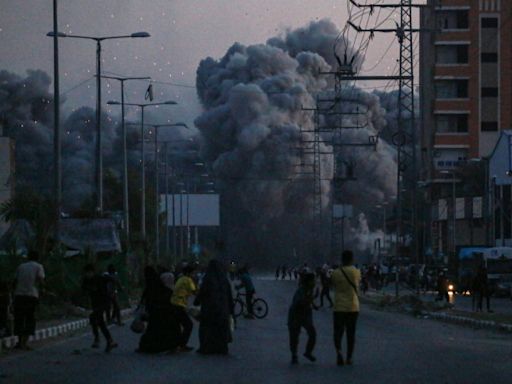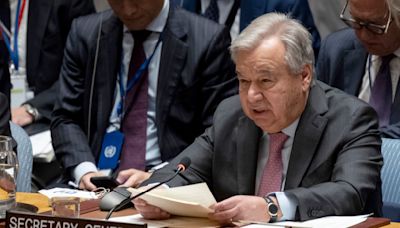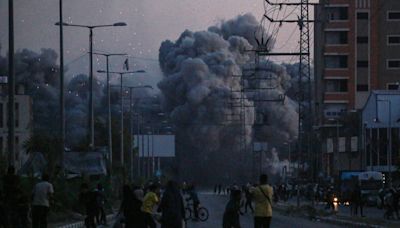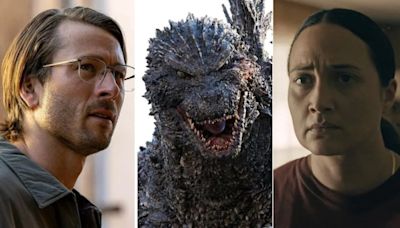Search results
Watch the full documentary by Ken Burns and Lynn Novick, which tells the story of the Second World War through the personal accounts of four American towns. Learn how the war changed the lives of millions of Americans and shaped the history of the world.
4 hours ago · Legacy of nuclear war: Washington unleashed atomic bombs on both Japanese cities in August 1945, leaving years of destruction and psychological trauma on communities there.
1 day ago · A look back at D-Day: Why the World War II invasion remains important on its 80th anniversary Eighty years ago, the D-Day invasion on June 6, 1944 didn't play out perfectly.
- Overview
- The outbreak of war
World War II began in Europe on September 1, 1939, when Germany invaded Poland. Great Britain and France responded by declaring war on Germany on September 3. The war between the U.S.S.R. and Germany began on June 22, 1941, with Operation Barbarossa, the German invasion of the Soviet Union. The war in the Pacific began on December 7/8, 1941, when Japan attacked the American naval base at Pearl Harbor and other American, Dutch, and British military installations throughout Asia.
Read more below: Axis initiative and Allied reaction: The outbreak of war
Pacific War
Read more about the war in the Pacific.
What countries fought in World War II?
The main combatants were the Axis powers (Germany, Italy, and Japan) and the Allies (France, Great Britain, the United States, the Soviet Union, and, to a lesser extent, China).
By the early part of 1939 the German dictator Adolf Hitler had become determined to invade and occupy Poland. Poland, for its part, had guarantees of French and British military support should it be attacked by Germany. Hitler intended to invade Poland anyway, but first he had to neutralize the possibility that the Soviet Union would resist the invasion of its western neighbour. Secret negotiations led on August 23–24 to the signing of the German-Soviet Nonaggression Pact in Moscow. In a secret protocol of this pact, the Germans and the Soviets agreed that Poland should be divided between them, with the western third of the country going to Germany and the eastern two-thirds being taken over by the U.S.S.R.
Britannica Quiz
Pop Quiz: 17 Things to Know About World War II
Having achieved this cynical agreement, the other provisions of which stupefied Europe even without divulgence of the secret protocol, Hitler thought that Germany could attack Poland with no danger of Soviet or British intervention and gave orders for the invasion to start on August 26. News of the signing, on August 25, of a formal treaty of mutual assistance between Great Britain and Poland (to supersede a previous though temporary agreement) caused him to postpone the start of hostilities for a few days. He was still determined, however, to ignore the diplomatic efforts of the western powers to restrain him. Finally, at 12:40 pm on August 31, 1939, Hitler ordered hostilities against Poland to start at 4:45 the next morning. The invasion began as ordered. In response, Great Britain and France declared war on Germany on September 3, at 11:00 am and at 5:00 pm, respectively. World War II had begun.
5 days ago · Learn about the nature, causes, conduct, and prevention of war, a conflict between political groups involving hostilities of considerable duration and magnitude. Explore the evolution of theories of war, from Clausewitz to nuclear, biological, and chemical holocaust.
- Joseph Frankel
Feb 24, 2024 · Putin’s announcement signaled the start of Russia’s war in Ukraine, which has so far cost the lives of over 10,300 civilians, according to the United Nations. Military losses are harder to ...
People also ask
What are the causes of war?
What are the different types of war?
What are the consequences of war?
What is the history of war?
May 23, 2024 · Other maps and charts from the war June 2023: Destruction of Kakhovka dam. Following the destruction of the Kakhovka dam in southern Ukraine on June 6, floodwaters devastated towns and villages ...





